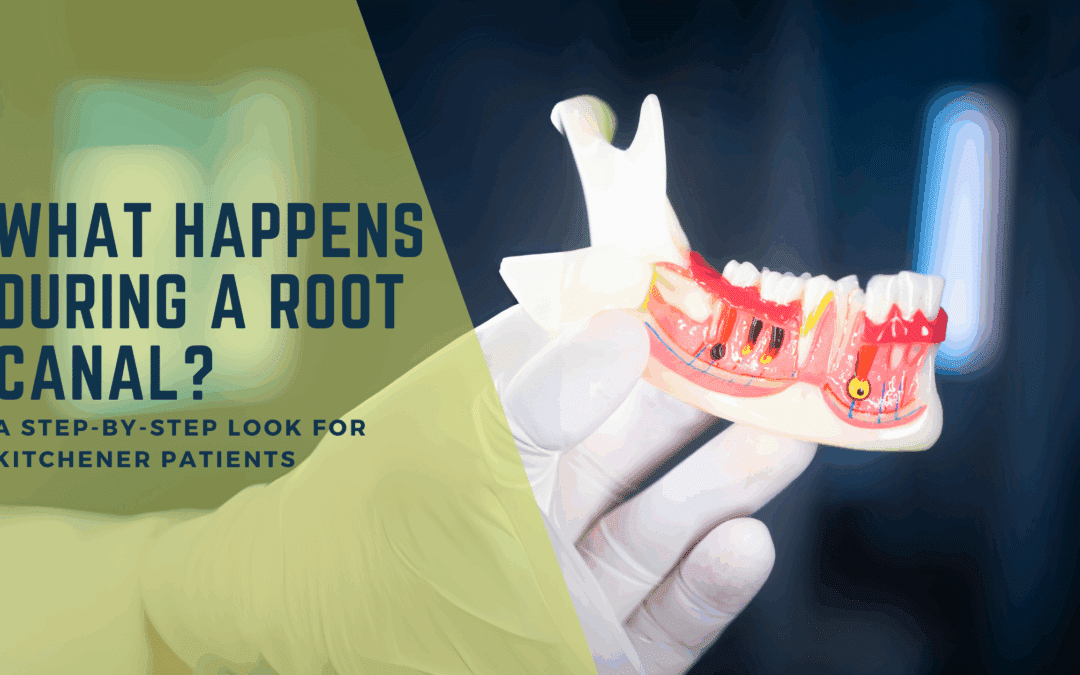If your dentist has recommended a root canal, don’t panic just yet it’s a routine procedure that relieves pain and saves your natural tooth. Many patients in Kitchener-Waterloo feel anxious about what to expect during this treatment. In this post we will break down step-by-step all you need to know for a root canal procedure so you feel informed and at ease when your appointment comes around.
Why You might Need A Root Canal
A root canal treatment is needed when the pulp inside your tooth becomes inflamed or infected, often due to deep decay, repeated dental procedures, or trauma. Left untreated, it can cause tooth pain and may lead to an abscess.
Root Canal Root Canal Procedure Steps
No more waiting around for film to develop. With advanced digital X rays, there’s no waiting for film to develop, your Images appear on our chairside monitors in seconds, ready for zooming and contrast adjustments. This precision helps us detect tiny cracks, early bone changes, or developing cavities before they require more extensive and expensive treatments down the road.
Step 1: Diagnosis & X-Rays
Your treatment will begins with a comprehensive dental exam. Your dentist will take digital imaging X-rays to assess the infected tooth and surrounding bone. If infection has reached the pulp, root canal therapy would be the recommended course of action.
Step 2: Local Anesthetic
Before treatment starts, a local anesthetic is administered to numb the area. Despite popular misconceptions, with modern dental techniques and technology, a root canal isn’t any more painful than getting a white tooth filling.
Step 3: Accessing the Root Canal
Once numb, the dentist will place a small protective sheet called a dental dam over your tooth. This keeps the area clean and saliva-free. Then, a tiny opening is made to access the infected pulp inside the tooth.
Step 4: Cleaning and Shaping
Using fine instruments, the dentist will remove the infected pulp and bacteria from the root canals. The canals are then cleaned, shaped, and disinfected with solutions to eliminate remaining bacteria.
Step 5: Filling the Canals
After cleaning, the empty canals are filled with a biocompatible material called gutta-percha, which seals the space and prevents reinfection. The opening is then temporarily filled or prepared for a dental crown.
Step 6: Restoration & Crown Placement
Most patients return for a second appointment to receive a permanent dental crown. This restores your tooth’s strength and function. Without a crown, your tooth would be more vulnerable to fracture. At our Kitchener dental clinic, custom crowns can be prepared in just one to two weeks.
Post-Procedure: What to Expect During Recovery
After the procedure, you may feel some sensitivity or mild discomfort for a few days. Over-the-counter pain relief usually helps. Avoid chewing hard foods on the treated side until the crown is placed. If you experience swelling, severe pain, or fever after the procedure, contact your dentist immediately
Choosing a Root Canal Dentist in Kitchener-Waterloo
Root canals are a common, safe, and effective solution to relieve pain and save your natural tooth. Knowing what to expect at every stage can help you feel more confident and relaxed about your treatment.
If you are looking for a dental clinic with experience in endodontic therapy and access to modern technology. Our dental practice in Kitchener-Waterloo offer same-day appointments, digital x-rays, and sedation options to take care of all your dental needs. Book a consultation today to get the expert care your smile deserves.


